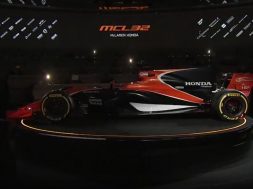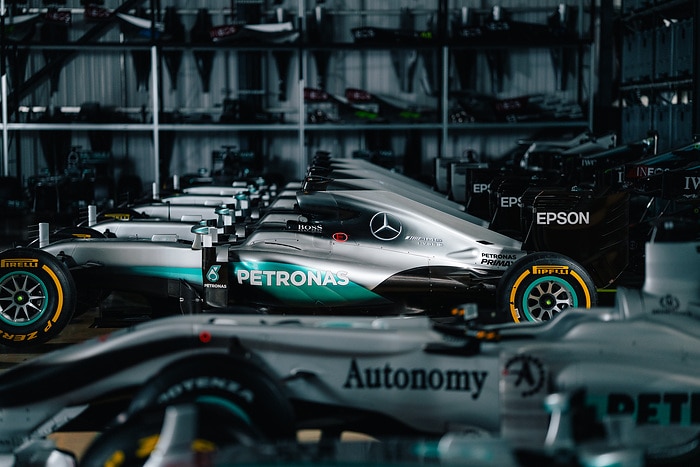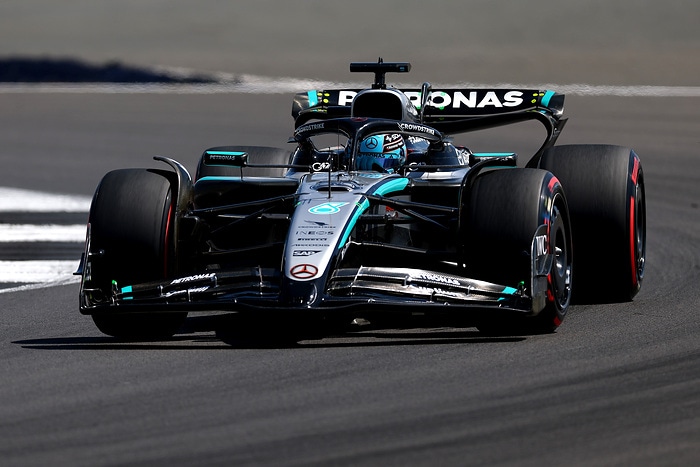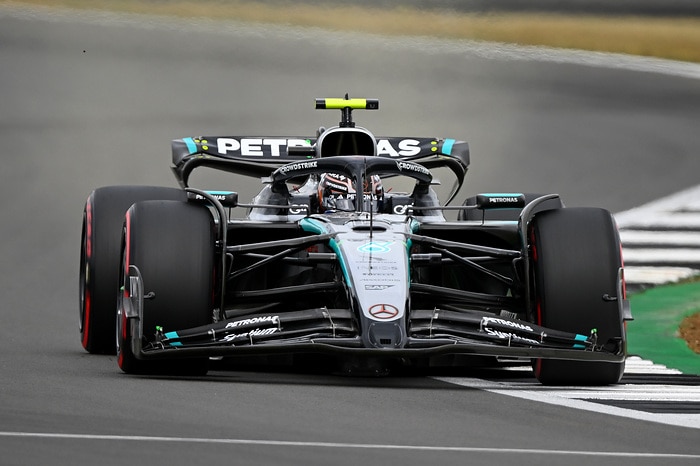Here is the video of the live stream of the McLaren-Honda MCL32 skip to the 25 min mark for the presentation!
Get the full lowdown of the 2017 McLaren-Honda Formula 1 car in our MCL32 Technical Specification.
CHASSIS
| Monocoque | Carbon-fibre composite, incorporating driver controls and fuel cell |
| Safety structures | Cockpit survival cell incorporating impact resistant construction and anti-penetration panels, front impact structure, prescribed side impact structures, integrated rear impact structure, front and rear roll structures |
| Bodywork | Carbon-fibre composite, including engine cover, sidepods, floor, nose, front wing and rear wing with driver-operated drag reduction system |
| Front suspension | Carbon-fibre wishbone and pushrod suspension elements operating inboard torsion bar and damper system |
| Rear suspension | Carbon-fibre wishbone and pullrod suspension elements operating inboard torsion bar and damper system |
| Weight | Overall vehicle weight 728kg (including driver, excluding fuel) |
| Weight distribution between 45.3% and 46.3% | |
| Electronics | McLaren Applied Technologies. Including chassis control, power unit control, data acquisition, sensors, data analysis and telemetry |
| Instruments | McLaren Applied Technologies dashboard |
| Greases & Fluids | Castrol grease and hydraulic oil |
| Brake system | Akebono brake calipers and master cylinders |
| Akebono ‘brake by wire’ rear brake control system | |
| Carbon discs and pads | |
| Steering | Power-assisted rack and pinion |
| Tyres | Pirelli P Zero |
| Race wheels | Enkei |
| Garage Radio | Kenwood |
| Paint | AkzoNobel Car Refinishes system using Sikkens products |
| Cooling Systems | Calsonic Kansei water and oil cooling |
POWER UNIT
| Type | HONDA RA617H |
| Minimum weight | 145 kg |
| Primary PU components | Internal Combustion Engine (ICE) |
| Motor Generator Unit – Kinetic (MGU-K) | |
| Motor Generator Unit – Heat (MGU-H) | |
| Energy Store (ES) | |
| Turbocharger | |
| Control Electronics |
INTERNAL COMBUSTION ENGINE
| Capacity | 1.6 litres |
| Cylinders | Six |
| Bank angle | 90 degree vee angle |
| No of valves | 24 |
| Max speed | 15,000 rpm |
| Max fuel flow rate | 100 kg/hour (above 10,500 rpm) |
| Fuel consumption | 105 kg ‘lights to flag’ regulated fuel capacity limit |
| Fuel injection | Direct injection, single injector per cylinder, 500 bar max |
| Pressure charging | Single-stage compressor and exhaust turbine, common shaft |
| Fuel & Lubricant | BP Castrol |
ENERGY RECOVERY SYSTEM
| Architecture | Integrated Hybrid energy recovery via Motor Generator Units |
| Crankshaft coupled electrical MGU-K | |
| Turbocharger coupled electrical MGU-H | |
| Energy Store | Lithium-Ion battery, between 20 and 25 kg |
| Maximum energy storage, 4 MJ per lap | |
| MGU-K | Maximum speed, 50,000 rpm |
| Maximum power, 120 kW | |
| Maximum energy recovery, 2 MJ per lap | |
| Maximum energy deployment, 4 MJ per lap | |
| MGU-H | Maximum speed 125,000 rpm |
| Maximum power, unlimited | |
| Maximum energy recovery, unlimited | |
| Maximum energy deployment, unlimited |
TRANSMISSION
| Gearbox | Carbon-fibre composite main case, longitudinally mounted |
| Gear ratios | Eight forward and one reverse |
| Gear selection | Electro-hydraulically operated seamless shift |
| Differential | Epicyclic differential withmulti-platelimited slipclutch |
| Clutch | Electro-hydraulically operated, carbon multi-plate |
| Lubricant | Castrol |























